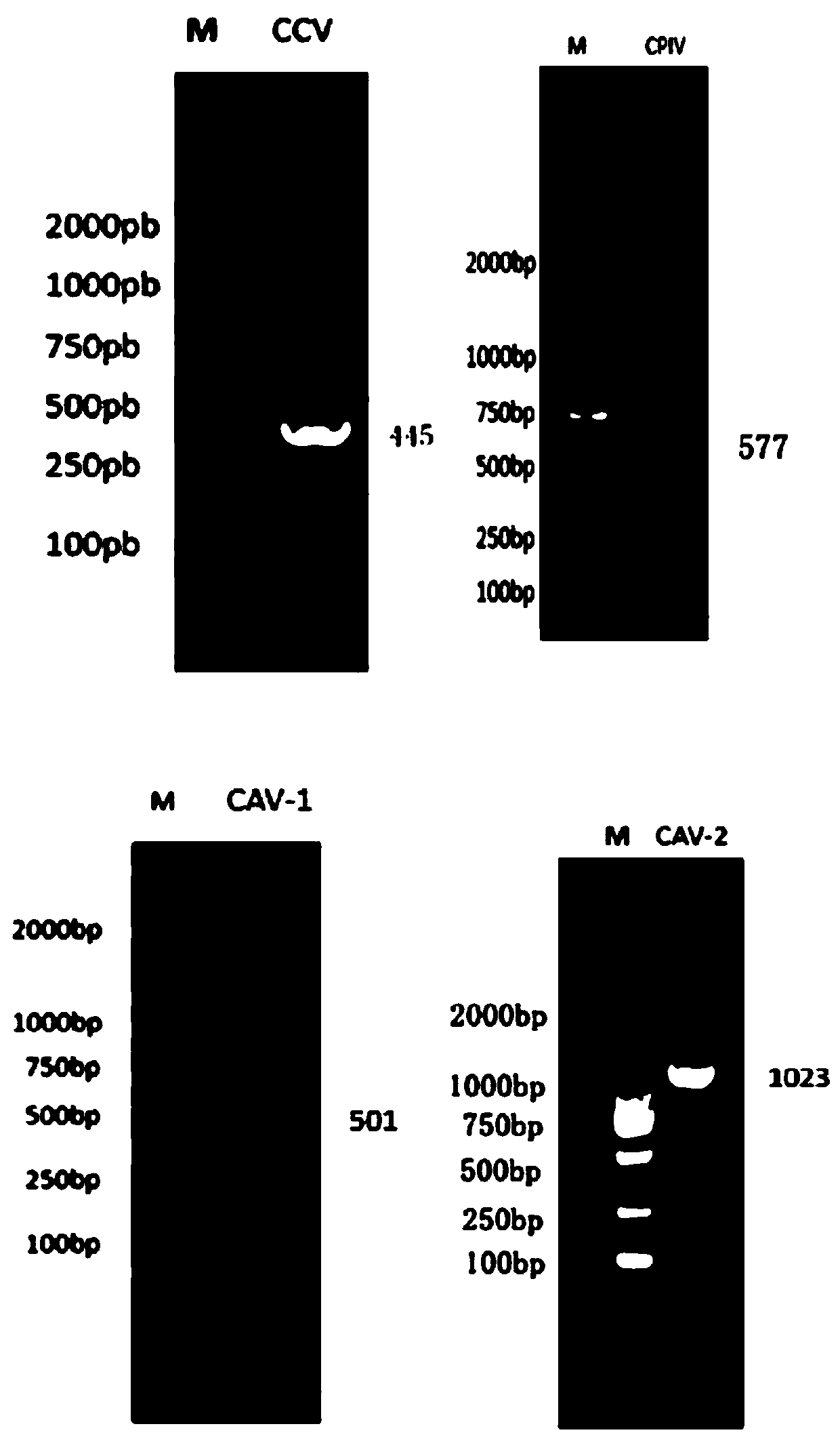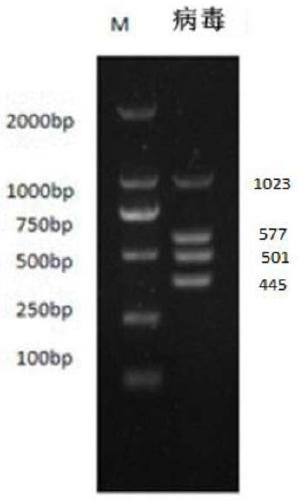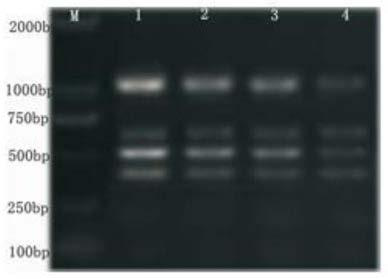Multiplex PCR primer for detecting four viruses of dog, detection method and application
A canine adenovirus, multiplex technology, applied in the field of multiplex PCR detection primers for the detection of four canine viruses, can solve the problems of missed detection, achieve the effects of saving time and cost, good specificity, and reducing the probability of false positives
- Summary
- Abstract
- Description
- Claims
- Application Information
AI Technical Summary
Problems solved by technology
Method used
Image
Examples
Embodiment 1
[0031] Design of Multiplex PCR Primers for Detection of Four Canine Viruses
[0032] 1. Experimental materials
[0033] Virus strains CCV and CAV-2 were stored in the Laboratory of Microbiology and Immunity, College of Veterinary Medicine, Qingdao Agricultural University, and CPIV and CAV-1 were purchased from ATCC by Beina Chuanglian.
[0034] 2. Experimental method
[0035] Retrieve the whole genome sequences of CCV, CPIV, CAV-1 and CAV-2 viruses from the GenBank database, conduct homology analysis on the genome sequences of each virus, and consult the literature at the same time to determine the sequences of the conserved regions of the four viruses, use primer Primer design software such as 5.0 designs primers with the sequence on the S gene of CCV, the fragment on the NP gene of CPIV and the fragment of the E3 gene of CAV-1 and CAV-2 (as shown in Table 1).
[0036] Table 1 Multiplex PCR Primer Sequence
[0037]
[0038] 3. Extraction of RNA and DNA
[0039] Using t...
Embodiment 2
[0051] Multiplex PCR Specificity Test
[0052] Clinically collect dog fecal anal swabs and nasal swabs, use this as a template, use the viral genome DNA / RNA extraction kit to extract DNA / RNA from the clinically collected samples, and reverse-transcribe the RNA into cDNA. PCR amplification, select the cDNA of positive disease materials of canine coronavirus and canine parainfluenza virus, the DNA of positive disease materials of canine infectious hepatitis virus and canine infectious laryngotracheitis virus, and the anus of a healthy dog The cDNA and DNA extracted from swabs and nasal swabs were used as templates for canine parvovirus-positive disease materials for multiplex PCR in clinical specificity tests. Add CPIV and CAV primers to the CCV template; add CCV and CAV primers to the CPIV template; add CCV and CPIV primers to the CAV-1 and CAV-2 templates; Three primers of CCV, CPIV and CAV were added to the template of canine parvovirus, PCR amplification was carried out wit...
Embodiment 3
[0055] Multiplex PCR Sensitivity Test
[0056] Use the cDNA of canine coronavirus and the positive strain of canine parainfluenza virus, the DNA of the positive strain of canine infectious hepatitis virus and canine infectious laryngotracheitis virus as templates, and use a spectrophotometer to adjust the concentration of cDNA and DNA to make the final Concentration is 400ng / μL, then carry out 4 times of 2-fold dilution, divide into 4 gradients, respectively 400ng / μL, 200ng / μL, 100ng / μL, 50ng / μL, use the reaction conditions of multiplex PCR in Example 1 to carry out PCR amplification was identified by agarose gel electrophoresis.
[0057] The result shows: if image 3 As shown, after electrophoresis at 4 gradient concentrations, clear bands can be observed on the gel imager, but the clarity begins to decrease when the template concentration is lower than 100ng / μL, and the PCR amplification results are relatively higher than those of higher concentrations. is less effective. ...
PUM
 Login to View More
Login to View More Abstract
Description
Claims
Application Information
 Login to View More
Login to View More - R&D
- Intellectual Property
- Life Sciences
- Materials
- Tech Scout
- Unparalleled Data Quality
- Higher Quality Content
- 60% Fewer Hallucinations
Browse by: Latest US Patents, China's latest patents, Technical Efficacy Thesaurus, Application Domain, Technology Topic, Popular Technical Reports.
© 2025 PatSnap. All rights reserved.Legal|Privacy policy|Modern Slavery Act Transparency Statement|Sitemap|About US| Contact US: help@patsnap.com



